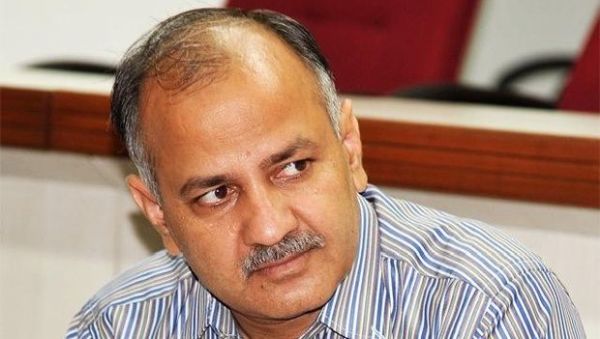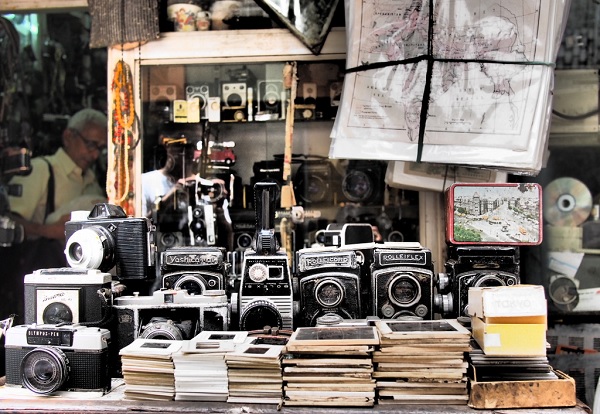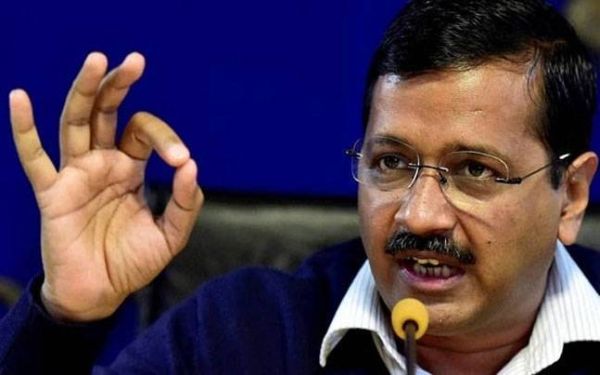
by Editor | May 25, 2021 | News, Politics
 By Aroonim Bhuyan,
By Aroonim Bhuyan,
New Delhi : Though the personal chemistry between Prime Minister Narendra Modi and new US President Donald Trump was the highlight of India-US ties in 2017, what has come as a huge boost to bilateral relations towards the end of the year is the key strategic geopolitical role for India in the new US security strategy.
At the same time, New Delhi made it clear that its foreign policy remains independent when it went with the rest of the world in voting in the UN General Assembly against Trump’s decision to recognise Jerusalem as the capital of Israel.
Despite a change of guard in Washington, the India-US global strategic partnership remained strong as ever and a warm hug marked the first-ever meeting between Modi and Trump at the White House in June this year.
While Trump said that bilateral ties have “never been stronger”, Modi said that both the countries were “committed to such a bilateral architecture that will take our strategic partnership to new heights”.
According to a joint statement, the two leaders “resolved to expand and deepen the strategic partnership between the countries and advance common objectives”.
“President Trump and Prime Minister Modi expressed confidence that, together, the United States and India will provide strong leadership to address global challenges and build prosperity for their citizens in the decades to come,” the statement said.
And that is exactly what got reflected in the New Security Strategy (NSS) that Trump announced this month that sees India being mentioned no less than seven times.
“We welcome India’s emergence as a leading global power and stronger strategic and defence partner,” the NSS states. “We will seek to increase quadrilateral cooperation with Japan, Australia, and India.”
This comes in the wake of the meeting between officials of India, the US, Japan and Australia in the Philippines last month in which the security and prosperity of the Indo-Pacific region were discussed.
“We will expand our defence and security cooperation with India, a Major Defence Partner of the United States, and support India’s growing relationships throughout the region,” the NSS states.
It says that the US would “deepen our strategic partnership with India and support its leadership role in Indian Ocean security and throughout the broader region”.
And what will come as music to New Delhi’s ears is the reference to Pakistan from the perspective of terrorism.
“We will press Pakistan to intensify its counter-terrorism efforts, since no partnership can survive a country’s support for militants and terrorists who target a partner’s own service members and officials,” the NSS states.
It also states that the US would encourage India to increase its economic assistance in the region.
Trump continued with his praise of Modi at the Asia Pacific Economic Cooperation (APEC) Summit in Vietnam last month where he said that the Indian leader was working to bring his country and its people together.
Soon after this, Trump and Modi again met on the sidelines of the ASEAN and East Asia Summits in the Philippines, a meeting that was described as “warm and productive”.
Modi-Trump bonhomie apart, high-level visits continued between the two sides throughout the year.
After the Indian leader’s visit to Washington in June, both US Defense Secretary Jim Mattis and Secretary of State Rex Tillerson visited India.
From the Indian side, Finance Minister Arun Jaitley, then Commerce and Industry Minister Suresh Prabhu and Minister for Petroleum and Natural Gas Dharmendra Pradhan were among those who visited the US.
Another highlight of the India-US ties this year was President Trump’s announcement of a new US policy on South Asia that called for India playing a key role in the reconstruction of Afghanistan.
The appointment of Kenneth Juster as the new US Ambassador in New Delhi came in for praise from all quarters. Juster is an old India hand who played a key role in the India-US civilian nuclear cooperation agreement.
On its part, New Delhi, reflecting the government’s tendency of keeping faith in trusted people in key diplomatic posts, extended by a year the term of Indian Ambassador to the US Navtej Sarna, who was to retire at November-end.
Another highlight was the visit of President Trump’s daughter Ivanka Trump to Hyderabad for the Global Entrepreneurship Summit, hosted by India for the first time.
This year also saw a shipment of American crude oil arriving in India, marking the first US oil export to India in more than four decades.
On the downside of the bilateral issue this year, however, was the H1-B visa issue that continues to remain prickly.
Soon after taking over as President, Trump called for stricter norms for issuance of H1-B visas, largely availed of by Indian IT firms. A private member’s bill was also introduced earlier this year in the US Congress by Democrat Zoe Lofgren which seeks to increase the minimum salary of an H1-B visa holder to a whopping $130,000 from the current minimum of $60,000.
While Trump has spoken of restricting the H1-B visa system as part of his policy of putting Americans first, there have been no changes to it so far and for this year the same levels of 65,000 for general H1-B visas and 20,000 for those with advanced US degrees have been kept.
(Aroonim Bhuyan can be contacted at aroonim.b@ians.in)
—IANS

by Editor | May 25, 2021 | News, Politics

Manish Sisodia
New Delhi : Delhi Deputy Chief Minister Manish Sisodia on Wednesday challenged the state governments led by BJP and Congress to compete with his state’s education “revolution”.
He also challenged the BJP-ruled MCDs for a comparison with the schools of the Delhi government.
“Compete with the work done in education sector by our government. Let’s start today and then compare after a year or two. This competition will ultimately benefit the students of the country providing them with good schools,” Sisodia, who also holds the Education portfolio, told media here.
His remarks come in the wake of criticism that his government received from the opposition on its performance in the field of education among others.
State BJP chief Manoj Tiwari on November 24 said that Chief Minister Arvind Kejriwal failed to deliver on his poll promises that he would improve education, while Congress’ Delhi unit President Ajay Maken also slammed the Delhi government, saying the number of students and its results have gone drastically down in last three years.
Sisodia hit back on Wednesday claiming that government schools are being shut down and private schools are increasing in states led by BJP and Congress.
“I appreciate that the important matter of education is being discussed by the politicians who keep discussing issues of ‘shamshan’ and ‘kabristaan’,” he said.
He further said that both BJP and Congress “did nothing in the education sector” and rather played in the hands of the private school lobby.
Referring to the data of the Education Department, he said that the transition loss from Class 10 to Class 12 came down in the two years of AAP’s rule in Delhi.
“While the transition loss in 2013-14 was 6,2,158, it has come down 2016-17 to 1,8,405.”
He also pointed towards the increase in expenditure on school infrastructure, which, he said, has gone up to Rs 1,229 crore in 2016-17 from Rs 210 crore in 2012-13.
“We changed the way education sector worked in Delhi. The schools which were dilapidated and were not maintained, get whitewashed every year now, and drinking water and sanitation has been taken care of.
“Four-five years back when we started talking on wide-spread corruption, the political discourse shifted from caste, religion to issues like corruption. I am sure education will become a topic in national politics in the coming years,” he added.
—IANS

by Editor | May 25, 2021 | Markets, News

Courtesy :Ajabghazab
By Shaheryar Hossain
At a time when marketers are keeping no stones unturned to attract customers, Delhi Chor Bazaar has emerged as the perfect place for shopping and take control of your spend the smarter way.
Starting from consumer durables to clothing and electronics goods, all the goods are available at reasonable price at the Sunday market in the national capital.
While the Chor Bazaar was earlier located behind the Red Fort, the no guarantee market has recently been shifted to Daryaganj area around the Jama Masjid and Novelty Cinema Hall.
Let’s have a glance on things to do before purchasing anything from one the oldest markets in Delhi.
Time
The price of the product rises with the increase in the number of customers thronging to the market. The market starts before the sunrise and shuts in the evening. So, it is advisable to reach the market between 5AM and 6 AM.
Transportation
The best way to reach the market is via your own car or bike, luxury taxi or auto rickshaw. Metro Railway is another option for people residing nearby to Violet Line Metro Stations. The nearest Metro station to Chor Bazaar is Jama Masjid station (Gate Number 4)
Market Research
Before purchasing anything, one should always do the market research.
Why the market is named Chor Bazaar?
The street market, with shops along with on the roadside or on footpaths , is called Chor Bazaar because of resale of products obtained by unfair means. The products sold in the market are usually second hand.
Four Products to buy from Chor Bazaar as follows:
Shoes/ Slippers/ Sandals
A galaxy of shoes is available at unbelievably low prices. All you need to do is to keep an eye on the branded items and bargain hard.
Books
Starting from Ruskin Bond’s story books to Preeti Shenoy’s affair tales, all are available at the Sunday street market at reasonable price.
Cameras
Branded cameras such as Nikon and Cannon are available in the theif market starting from Rs 4000. But there is no guarantee.
Sports Equipment
If you are looking for some cheap gym or sports equipment then Chor Bazaar is the perfect place. It is famous for equipment like dumbbells, weight and that too at super cheap rates.
What not to buy from Chor Bazaar?
Mobile Phones
If you want to buy smart phones then Thieves Market is not at all a safe place to purchase. Most of the items sold here are brought to the market through unfair means. You might get in trouble if it gets traced on being switched on. It is always better to mobile phones from a reputed shops such as The Mobile Shop, Big Bazaar, etc.
Shampoo and Deo
Used shampoo bottles / toiletries containers are re-filled with liquid soap and sold in the Sunday market.
Highlights
The market is known as Thieves Market because stolen goods are sold here legally.
Location: Near Red Fort
How to reach?
The nearest metro station is Jama Masjid metro station serving on Violet yellow line.

by Editor | May 25, 2021 | Corporate, Corporate Governance, News, Politics

Dhaka-Kolkata Maitree Express
By Sujit Chakraborty,
Agartala : India and Bangladesh will restore the pre-1965 status of rail connections between the two neighbours, Bangladesh Railway Minister Mazibul Hoque said here.
“India and Bangladesh will jointly restore the pre-1965 status of our rail connections.
“Currently India and Bangladesh have four operational rail links between West Bengal and western Bangladesh. More rail connections would be restored in the near future,” Hoque told IANS here on Friday night.
“The Agartala-Akhaura (Bangladesh) new rail link will be operational within a year. Funded by India, the necessary works for laying the new 15-km rail track between Agartala railway station and Akhaura railway station has already started.”
The Bangladesh Minister is here to attend the Rotary Clubs of India and Bangladesh’s two-day third “Setubandhan” international programme.
The state-run Indian Railway Construction Company (Ircon) will lay the five km track on the Indian side while the remaining 10 km would be laid by the Bangladesh railways.
The Rs 963 crore ($145 million) project was finalised in January 2010 when Bangladesh Prime Minister Sheikh Hasina met her then Indian counterpart, Manmohan Singh, in New Delhi.
Former Railway Minister Suresh Prabhu and his Bangladeshi counterpart, Majibul Haque, jointly laid its foundation stone here on July 31 last year.
The Indian government would bear the entire cost of the project. The issue had also figured during Prime Minister Narendra Modi’s meeting with Sheikh Hasina during his visit to Dhaka in June 2015.
“India is the best friend of Bangladesh. The country sheltered lakhs of Bangladeshi men and women in the 1971 Liberation War and helped a lot to create a sovereign country of Bangladesh,” said Hoque, who is himself a Bangladeshi “Mukti Yoddha” (freedom fighter) and trained in Tripura during the nine-month-long war.
The four operational railway links between India and Bangladesh are Petrapole-Benapole, Gede-Darshana, Radhikapur-Biral and Singhabad-Rohanpur.
Two more rail connections have been proposed. Feni (Bangladesh)-Belonia (India) will connect Tripura with the Bangladesh sea port of Chittagong, and West Bengal’s Siliguri will connect Panchagarh in North-Western Bangladesh, opening the scope for future cargo movement.
India’s External Affairs Minister Sushma Swaraj during her visit to Bangladesh earlier this week said a significant area of the bilateral cooperation is the quest to increase connectivity through restoration of pre-1965 links encompassing road, rail, water and coastal shipping.
The frequency of the Dhaka-Maitree express has been increased. The journey time of the Dhaka-Kolkata Maitree Express will be reduced from nine to six hours, by doing away with the two-phased immigration checks at the Indian border of Gede and Bangladesh border of Darshana.
The inaugural commercial run of the Kolkata-Khulna second passenger train service is expected to start by the middle of next month. More bus services linking the cities of Bangladesh and India have also begun.
The Kolkata-Khulna passenger train service was operational till 1965.
—IANS

by Editor | May 25, 2021 | Corporate, Corporate finance, Corporate Governance, Corporate Jobs, Employment, Government Jobs, News, Politics

Arvind Kejriwal
New Delhi : Delhi Chief Minister Arvind Kejriwal on Sunday said his government is ready to pay half the grants-in-aid for the next five years to DMRC to avoid a Metro fare hike if the central government is ready to pay the other half.
“As for as your suggestion regarding a grant to DMRC for meeting the gap in their operating finances, my government is willing to bear half the grant if only a matching grant is provided by the Central Government,” Kejriwal said in his letter to Union Housing and Urban Affairs Minister Hardeep Singh Puri.
Kejriwal’s letter, dated October 8, further said: “As you know, the central government and Delhi Government are 50-50 owners of DMRC and its equity etc. have been shared in this proportion all along. Let an assessment be made of the financial gap likely to be created on account of the postponement of the second fare hike and we will be able to bear half of it.
“Since the central government bears 100 per cent of loss for Kolkata Metro, I see no difficulty if it bears 50 per cent in case of Delhi. Thereafter, an FFC (Fare Fixation Committee) can be constituted, as suggested by you.”
Kejriwal, through his letter, also informed the central government to his government’s readiness to take over DMRC if it wants.
“If the central government agrees, Delhi government would be willing to take over DMRC. We are confident that we will be able to fund DMRC by improving the efficiency rather than effecting steep fare hikes and provide an affordable means of transport to the people of Delhi.
“However, till that happens, let the spirit of partnership prevail and I do hope that you will find a mutually acceptable solution to the present impasse relating to the second fare hike which we clearly regard as anti-people,” he wrote.
Kejriwal’s reaction came in response to Puri’s suggestion to him to give over Rs 3,000 crore annually to Delhi Metro Rail Corporation (DMRC) if he wants to hold the proposed Metro fare hike.
Puri had said to Kejriwal through his letter dated October 6 that the Metro Act did not allow the central government to put on hold the fare hike. He also noted that the alternative to fare hike was to provide DMRC yearly grants-in-aid for the next five years: Rs 3,040 crore, Rs 3,616 crore, Rs 3,318 crore, Rs 3,150 crore and Rs 2,980 crore respectively.
Puri was responding to a letter from Kejriwal on September 29 asking the central government to put the hike on hold.
The AAP government has opposed the fare hike proposed from October 10. It has locked horns with the Delhi Metro Rail Corp (DMRC) over the impending second hike this year, following the recommendation of the fourth FFC.
The DMRC defended its decision by saying its input costs had gone up over the years and the increase was at par with Metro rails in other cities.
The Delhi assembly will meet on Monday to discuss the proposed hike.
—IANS





